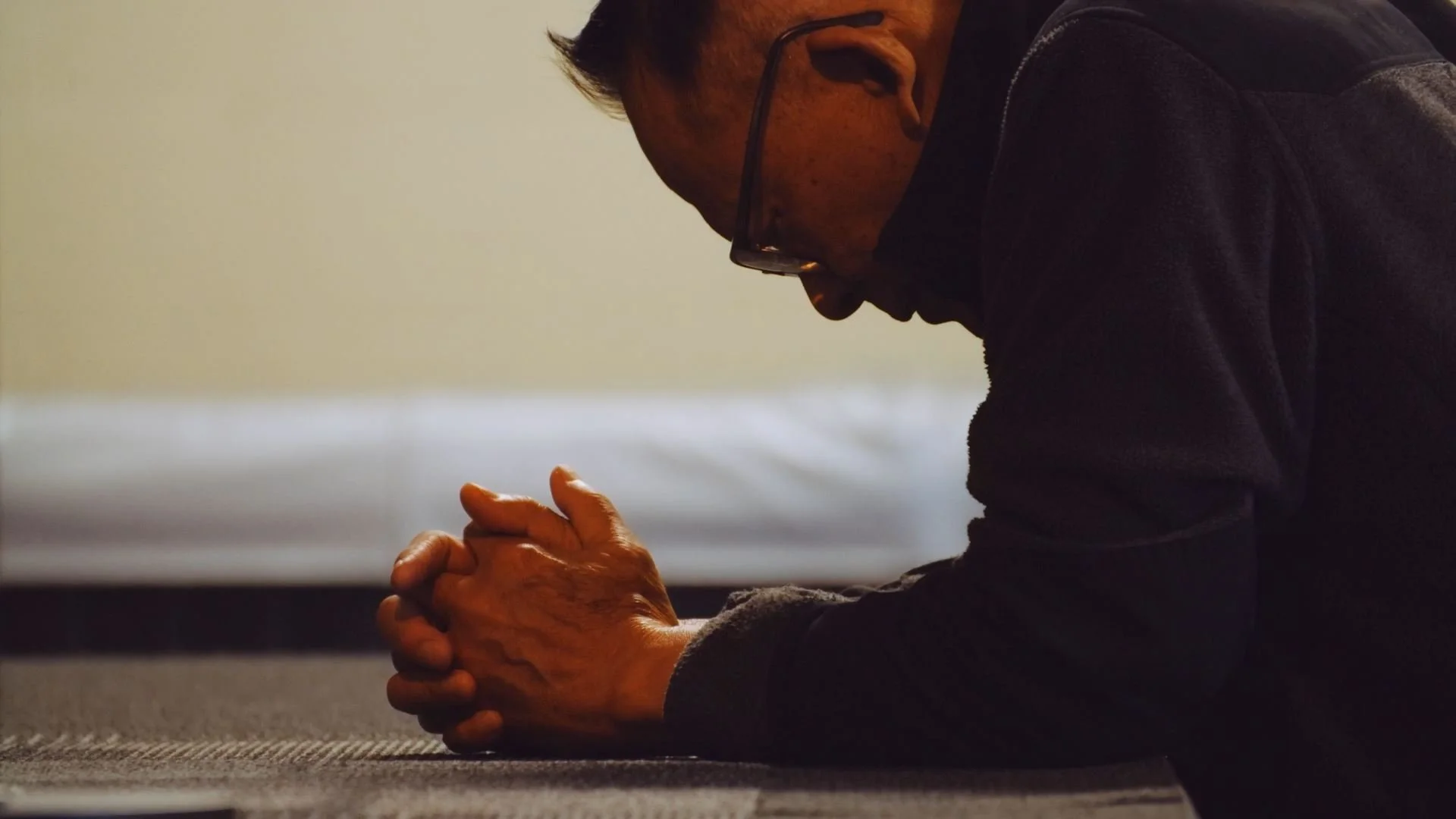A local pastor’s reflections on leading a 24-7 prayer room
By Rev Gabriel Chan | Senior Leader, Elim Church Dunedin | Chair, Combined Dunedin Churches
It was a cold Dunedin night in November, the start of our first in-person 24-7 Prayer campaign for the year. As the genius who’d called us to pray, I figured I’d better lead by example and take the midnight-to-6am shift. Honestly - I hadn’t thought it through. On the drive to church, I grumbled at God like it was His fault: “I’m exhausted! Why isn’t anyone else taking this seriously? Maybe this was a bad idea. I’ll quietly cancel it.”
God was conspicuously silent.
Prayer unfolding in the Dunedin Prayer room
But when I arrived, two people were already waiting at the door. Over the next six hours, 11 more arrived - each one woken by the Holy Spirit with a burden to pray. The sense of God’s presence in that room was undeniable, and over the next 21 days, every hour was filled - some multiple times over. Around 250 people came through, offering 1,200 hours of continuous prayer. Wow, God. Sorry for my grumbling!
That year, we ran nine weeks of 24-7 Prayer, totalling around 3,000 hours. God breathed on it, and a prayer culture began to take hold. Regular people were stirred to consecrate time to seek the living God. I still have the list of the 11 who turned up that night pinned next to my desk - a reminder that it’s the Lord who builds His church, and I’m just along for the ride.
If you’re thinking about running a prayer room in your church during the Pentecost Prayer Initiative, or you’re dreaming of cultivating a sustainable rhythm of 24-7 prayer, here are a few reflections from our journey.
Starting a 24-7 Prayer Room is a Sacrifice
24-7 Prayer is both a call to the necessary and the extravagant. Necessary because prayer together is vital; extravagant because it requires a willing, sacrificial commitment of time to be with Jesus. When I first told our church we’d be praying around the clock, the disbelief was almost palpable. The idea of getting up at 2am to pray was unimaginable - and having their pastor ask them to do it was even worse.
But if a church is to pray 24-7, someone’s got to take those night hours. These are the people I personally spent the most time encouraging, because they often cover three to six hours through the night. Others gave up lunch breaks or evenings in front of the telly.
As a leader, your job is to consistently hold the space open, inviting people to rise in faith and fill the room with prayer. Starting together, finishing together, and celebrating together matters. Early on, we ran 24-7 seasons where people prayed in their own homes. The first couple went well, but by the third, we filled just 60% of the slots. Some people probably hoped I’d drop the idea. But I felt God calling us to a deeper culture of prayer.
So, we made a shift - opening up our auditorium as a physical prayer space. The transformation was immediate. People showed up. God met them. In other words: expect some resistance, and have the courage to lead with conviction while staying open to adjust your approach.
Lessons from the Journey
We learned pretty quickly that praying for an hour doesn’t come naturally to most people. So we created a bunch of video resources to help people grow in prayer, which you can find here: YouTube Prayer Playlist
We also kept some simple prayer direction in the room - a theme on the wall, or scriptures to guide people. One time, we used the Lord’s Prayer, breaking it down verse by verse. These moments helped, but ultimately it’s the Holy Spirit who leads the prayer room.
Another tip: start well. We tried launching at midnight. Bad idea. Now we start on a Sunday evening after our night service, with a core group to open things up. We finish on a Friday night with another core group and a bit of celebration. It helps frame the week and keep energy high.
One practical challenge is that 24-7 Prayer can take a physical toll on a church community. Over time, we noticed the hardest slots to fill were Saturday day times and Sunday afternoons. Initially, I insisted we cover every hour of our 21-day seasons. These days, as we’ve moved to a rhythm of one week every two months, we’ve learned to leave those tricky spots free.
We’d love to move to a week every month - maybe even a permanent prayer room one day - but for now, bi-monthly keeps our church joyfully engaged and our leadership team sane. Build something sustainable for your community, while still leaving room for stretch and faith.
Lastly, and maybe most importantly: your job is to hold the space open and cast vision but don’t try to fill all the slots yourself. The more I ask God to speak to people about coming to pray, the faster the roster fills up.
In the End, It’s His Room
There’s so much more I could say about the joys and challenges of leading a 24-7 Prayer room, but I’ll leave you with this: there’s nothing like seeing people discover how to hear God’s voice, watching them light up after hours in prayer, and celebrating together when prayers are answered. The impact on your church’s faith and expectation is incredible. When we pray, we begin to notice how God is moving across our communities, our cities, and our nation.
In the end, it’s God who leads the prayer room - we just get to join Him for the ride.


